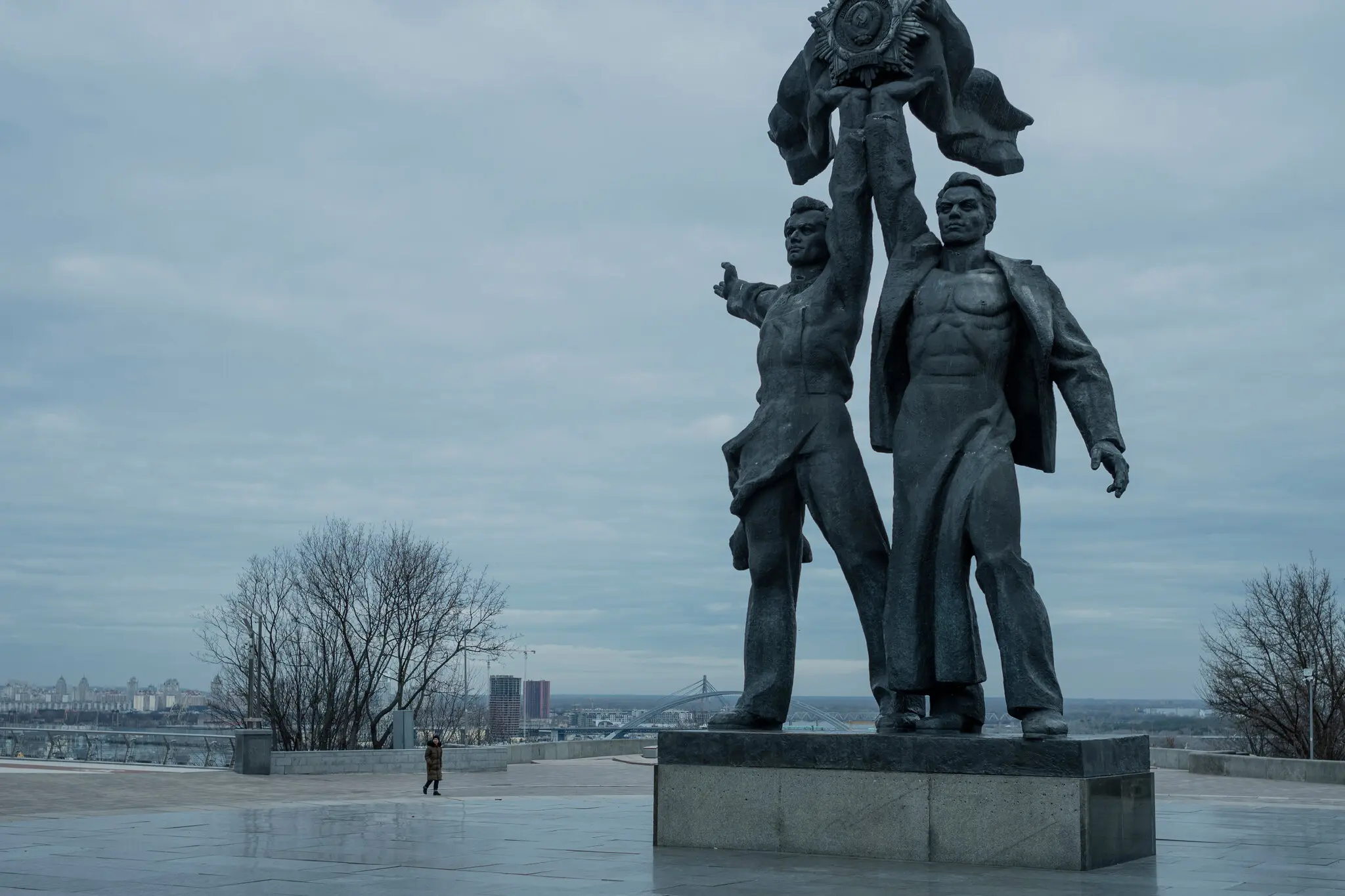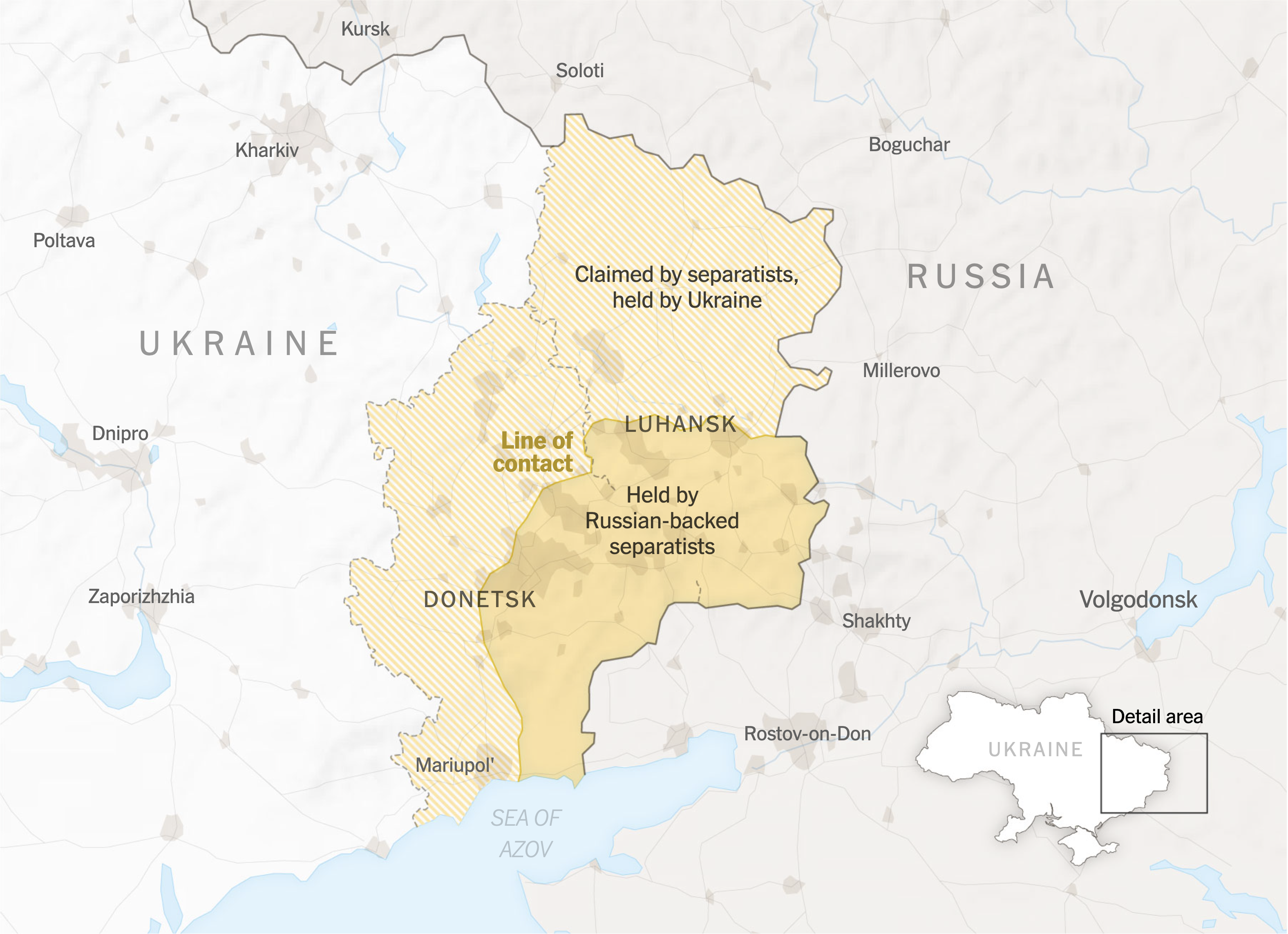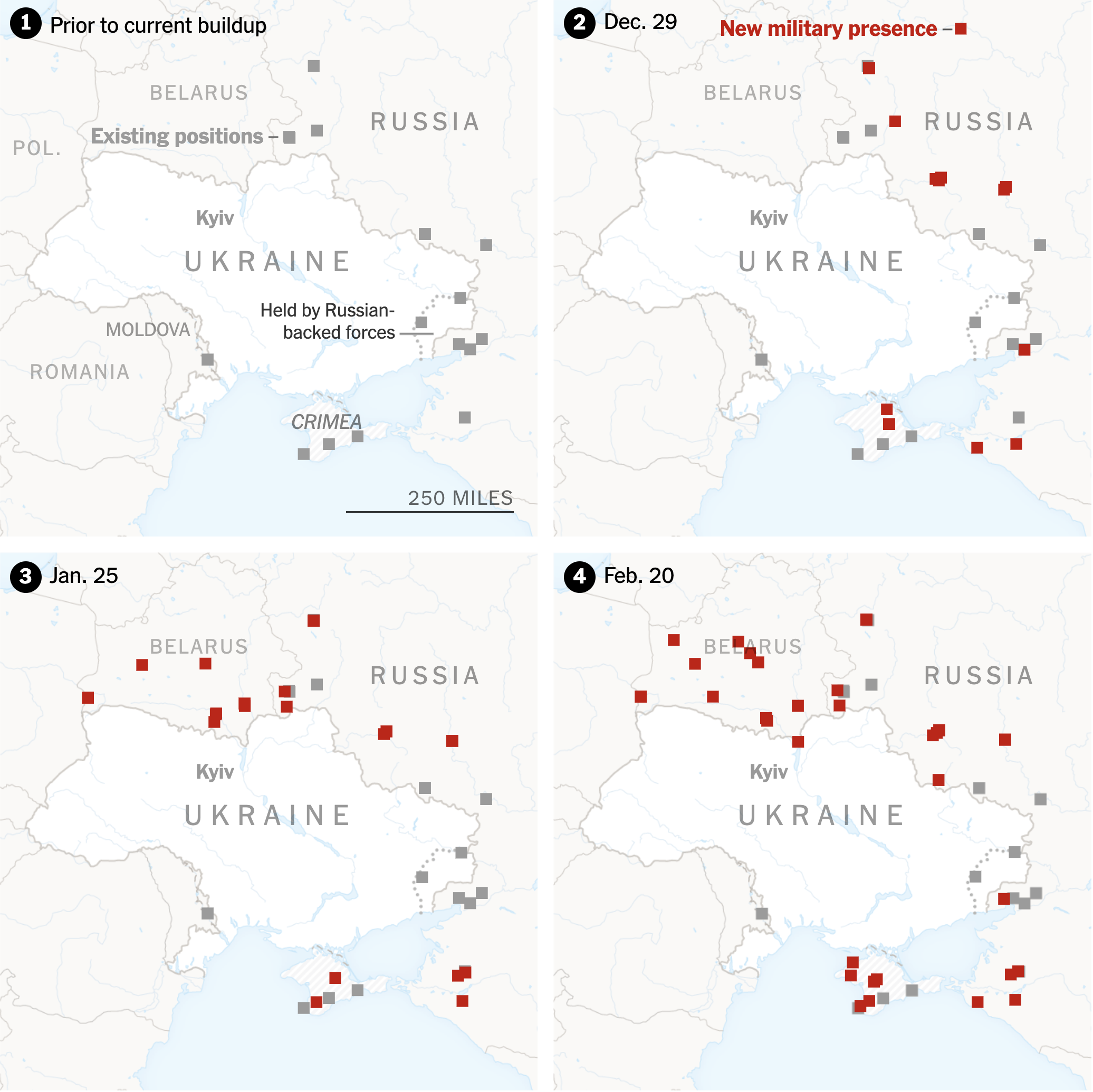Right now, Ukraine stands another wave of aggression from the Kremlin government. The Kremlin government deployed 190,000 troops around the Ukrainian borders while threatening Ukraine, the European Union and the United States of America to the full-scale escalation in Ukraine.
For more than eight years, the Ukrainian military battles Kremlin-backed separatists in an occupied L/DNR region (former Ukrainian Donetsk and Luhansk regions), which the Kremlin government have occupied, alongside with Crimea Peninsula, and keep fleeing those regions with military forces.

1922 – Russian SFSR, the Ukrainian SSR, Byelorussian SSR, and the Transcaucasian SFSR co-founded the Soviet Union.
1932–1933 – A famine (known as Holodomor2) caused by Stalin’s policy of collectivization kills millions of people, mainly ethnic Ukrainians in a country that is known as the bread basket of the Soviet Union.
1941–1944 – Nazi Germany and the Axis powers occupy the country during World War II.
1991–1994 – The Soviet Union is terminated via a treaty. Ukraine becomes independent and begins a transition to a market economy. It also comes into possession of a significant stockpile of nuclear weapons that had belonged to the Soviet Union. According to Budapest Memorandum on Security Assurances3, Ukraine gave up all nuclear weapons in exchange of protection from Russia, United States and other countries who signed the document.
Feb. 2014 – Maidan Protesters overthrow pro-kremlin President Viktor Yanukovych. During the revolution, more than 100 people are killed in protests that centered on the main square in the capital Kyiv. The interim government that followed this pro-Western revolution eventually signs a trade agreement with the European Union that is seen as a first step toward membership of the bloc.

2014–2015 – Russia, Ukraine, France and Germany sign a series of cease-fire agreements known as the Minsk Accords4. Many view these accords as ambiguous.
Apr. 2019 – A former comedian, Volodymyr Zelensky, is elected by a large majority as president of Ukraine on a promise to restore Donbas to the country.
2021–2022 – President Vladimir V. Putin of Russia seeks to prevent Ukraine’s drift toward the United States and its allies. Mr. Putin demands “security guarantees,” including an assurance by NATO that Ukraine will never join the group and that the alliance pulls back troops stationed in countries that joined after 1997. Many Russians view the Ukrainian capital, Kyiv, as the birthplace of their nation and cite the numerous cultural ties between the two countries.
Both Russia and the West see Ukraine as a potential buffer against each other.
Russia considers Ukraine within its natural sphere of influence. Most of it was for centuries part of the Russian Empire, many Ukrainians are native Russian speakers and the country was co-founder of the Soviet Union until getting independence in 1991.
Russia was unnerved when an uprising in 2014 replaced Ukraine’s Russia-friendly president with an unequivocally Western-facing government.
Most former Soviet republics and allies in Europe had already joined the European Union or NATO. Ukraine’s lurch away from Russian influence felt like the final death knell for Russian power in Eastern Europe.
Since October, Russia has been building an enormous military force along Ukraine’s border that now amounts to as many as 190,000 troops, according to American and Ukrainian officials. The Russian troop presence has grown in recent weeks from scattered groupings parked at military bases and training grounds to battle-ready units arrayed in tactical formations. They appear prepared to attack Ukraine from three directions, according to military analysts: the north, east and south.

- Prior to current buildup: Russia has numerous military bases near its border with Ukraine and added several installations inside Crimea after 2014, when it annexed the territory. Russian troops are also stationed in Transnistria, a Russian-backed breakaway region of Moldova.
- December 2021: Toward the end of last year, Russia began moving troops, tanks and heavy artillery into new positions across the country. Much of that buildup focused on two breakaway provinces in eastern Ukraine, Donetsk and Luhansk, where the Ukrainian military has been at war with Russian-backed separatists since 2014.
- January 2022: Russia started moving equipment and troops into Belarus, a close ally, in preparation for joint military drills. Russian forces in Belarus might allow Russia to open a new front on Ukraine’s northern border, closer to the capital, Kyiv.
- February 2022: Russian officials announced a partial withdrawal of troops, though U.S. officials disputed this claim and said Russia had increased its presence instead. Units from the Central and Eastern Military Districts, which are some of Russia’s most advanced, remain deployed.
The Ukrainian position is simple – peace and freedom. It is basic sovereign country and human rights. Ukraine want freedom from Russian external influence on politics, and propaganda on occupied states.
The threat of another Russian invasion has consolidated a growing sense of national pride and unity among Ukrainians, even among those who grew up speaking Russian.
As recently as 2001, opinion polls suggested that roughly half of Ukrainians supported the country’s departure from the Soviet Union. Today, more than 80 percent support Ukraine’s independence, and more than half back joining NATO.
Though anxiety courses through the country, life continues more or less as normal in most of it. Both civilians and government leaders say that they remain calm amid foreign reports of an imminent invasion, and some even say they doubt Russia will actually invade. But at the same time, many civilians have increasingly joined volunteer defense units and signed up for first-aid courses.
If you want to help the Ukrainian army without intermediaries, you can send money immediately to the Ministry of Defense6. They should be directed to the material, technical and medical support of the Armed Forces.
Credit:
2. Holodomor. - Wikipedia
3. Budapest Memorandum on Security Assurances. - Wikipedia
4. Minsk Accords. - Wikipedia
5. How Russian troops closed in on Ukraine. - The New York Times
6. 5 Ways to Support the Army Right Now: Anyone Can Do It. - The Village Ukraine
Thanks ♥️




